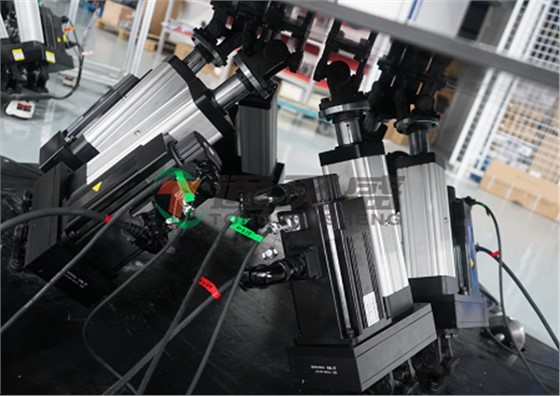You may have experienced dynamic simulation driving at a science museum, feeling as if you were truly racing on the track; or perhaps you have visited a large theme park, riding amusement rides that soar through the sky and twist and turn, immersing yourself in a thrilling adventure. Behind these amazing experiences lies a key technology—the six-degree-of-freedom motion simulation platform.
In the automotive industry, the six-degree-of-freedom motion simulation platform is an indispensable tool in the research and development and testing processes of automobiles.
During the car design phase, engineers utilize the six-degree-of-freedom motion simulation platform to simulate various complex road conditions, such as bumpy mountain roads, rugged off-road surfaces, and curves at high speeds.
By installing the vehicle on the six-degree-of-freedom motion simulation platform and simulating the vehicle's driving state under these conditions, engineers can collect a vast amount of data, including the body’s vibration situation, the stress on the suspension system, and the changes in tire-road adhesion.

This data is crucial for optimizing the vehicle’s suspension system, chassis tuning, and body structure design, significantly enhancing the car’s driving comfort, handling stability, and safety.
For example, during the development of automotive suspension systems, engineers can simulate the working state of the suspension system under different road conditions using the six-degree-of-freedom motion simulation platform, testing the effects of various suspension parameters on vehicle performance.
By continuously adjusting parameters such as spring stiffness and shock absorber damping, they can find the most suitable suspension tuning scheme for the vehicle, ensuring it offers both comfort and excellent handling performance.
Moreover, the six-degree-of-freedom motion simulation platform also plays an important role in testing automotive safety performance. It can simulate the instantaneous motion state of a car during a collision, helping engineers study the patterns of vehicle deformation in crashes, the timing and effectiveness of airbag deployment, and so on, thereby improving the safety design of vehicles and enhancing passive safety performance in collision incidents.


